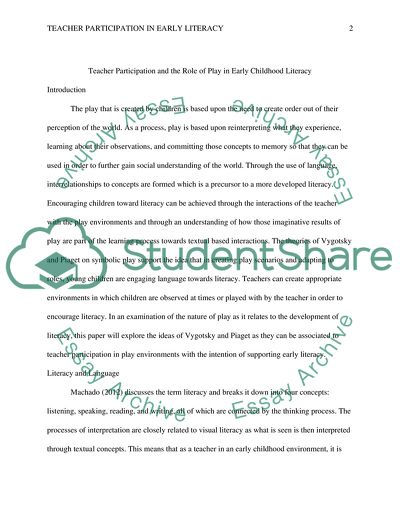Cite this document
(Teachers' Role in Early Literacy (community involvement in early Essay - 1, n.d.)
Teachers' Role in Early Literacy (community involvement in early Essay - 1. Retrieved from https://studentshare.org/education/1783652-teachers-role-in-early-literacy-community-involvement-in-early-childhood-education
Teachers' Role in Early Literacy (community involvement in early Essay - 1. Retrieved from https://studentshare.org/education/1783652-teachers-role-in-early-literacy-community-involvement-in-early-childhood-education
(Teachers' Role in Early Literacy (community Involvement in Early Essay - 1)
Teachers' Role in Early Literacy (community Involvement in Early Essay - 1. https://studentshare.org/education/1783652-teachers-role-in-early-literacy-community-involvement-in-early-childhood-education.
Teachers' Role in Early Literacy (community Involvement in Early Essay - 1. https://studentshare.org/education/1783652-teachers-role-in-early-literacy-community-involvement-in-early-childhood-education.
“Teachers' Role in Early Literacy (community Involvement in Early Essay - 1”. https://studentshare.org/education/1783652-teachers-role-in-early-literacy-community-involvement-in-early-childhood-education.


